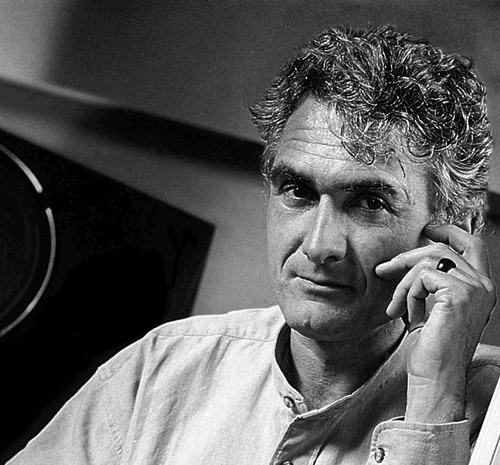7. Michel RedolfiDesert Tracks

Michel Redolfi is an acousmatic, electro-acoustic composer from France. He was a member of the GRM for a while but also he’s been the head of CIRN [Centre International De Recherche Musicale] in Nice, which is the French version of the GRM basically. I first became aware of him when GRM released an album of his in the 1980s called Pacific Tubular Waves. He developed this method of recording underwater hydrophonically which was far more advanced than it had been previously. Before that, hydrophones had been very basic and used to record whale song or dolphins talking. They weren’t used for anything that you would consider to be high fidelity. So he started making underwater recordings at much higher fidelity, with better equipment and microphones. He started holding concerts underwater in swimming pools and the entire audience would be in the pool itself. And he would project the music via speakers he made himself both in the water and outside of the water. So you had this very unusual sensory development in sound which no one had done quite like that before. The way sound travels through water is very different; it makes the sound take on a very different life. He recorded a lot of the sounds of water and waves and it’s done very well. This is not a cheesy ambient relaxation record. It’s sonically perfect. And he would manipulate these recordings with electronics as well. And when he had concerts the sound would be delivered via a multi-channel diffused system in a swimming pool. And even a multi-channel diffused system is rare enough in a concert setting. He went on to make a much more pure album in Desert Tracks. The first track is still of waves but the rest is recorded in the desert, hence the name. He layers them but essentially this is pure sound. There are little bits of digital manipulation and computer generated sound but most of it is quite dry, very well recorded on very good microphones. A lot of these guys, they don’t actually release albums per se but rather compilations of pieces that they’ve been commissioned to do, so this isn’t really an album as such. It’s very much an album where you really have to sit down and listen to it, you can’t just put it on. You could say he was a contemporary of Bernard Parmegiani but he has gone much more for the sonic nature of a dry sound and doesn’t manipulate it as much. I really appreciate the sonic nuances of these very dry sounds. They are recordings of spaces that he has visited and been very influenced by.


